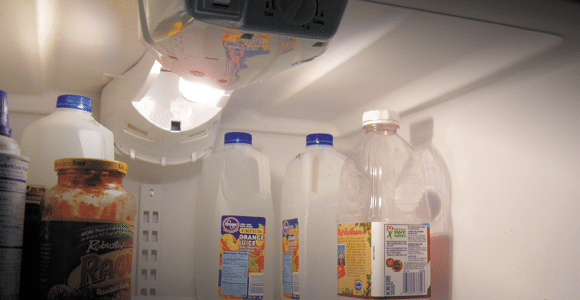Dear Jim: I like to cook, but the kitchen gets uncomfortably warm during summer, even with air conditioning. We are planning to remodel soon. What are some tips to keep the kitchen comfortable and efficient? — Marta F.
Dear Marta: Heat and water vapor buildup can quickly take the fun out of cooking. During summer, you can figure on doubling the energy use of the cooking itself because the air conditioner is using more electricity to remove the extra heat and humidity.
Because you are planning to remodel your kitchen, there are three basic concepts to consider for efficiency — design/layout of the kitchen, selection of appliances and general kitchen efficiency tips. Your goal is to use as little heat as possible to prepare your meals. Keep in mind: All of the electricity used, including for items like lighting, ends up as heat energy in your kitchen.
Layout
When laying out the floorplan for your remodeled kitchen, use the “kitchen triangle” concept for both efficiency and convenience. The three areas used most often are the sink, range and refrigerator. Try to locate these in an equilateral triangle.
It might sound obvious not to put hot appliances such as the range or dishwasher immediately next to the refrigerator, but I see it all the time. And remember not to place the range under a window that you plan to use for natural ventilation. Even a small breeze can carry away quite a bit of heat.
Choosing efficient appliances
Selecting appliances is the easiest part of designing an efficient kitchen, and the refrigerator and range/oven are good places to start because they are the two greatest energy-consumers in most kitchens.
In general, a top-freezer style refrigerator is the most efficient configuration, and the fewer features that penetrate the door, the more energy-efficient it is. But a chilled water/ice dispenser in the door may actually save electricity overall by reducing how often the door is opened.
Select the smallest refrigerator that satisfies your needs. A larger model has more surface area so it absorbs more heat from the room, and the compressor has to run longer to keep it cold inside. Each time you open the door of a larger refrigerator, more warm room air, which must be cooled, flows in than with a smaller one.
Choose your dishwasher and range based on the energy label and features you need. A range with a convection oven will cook more efficiently than a standard oven. The upfront cost is higher, but you’ll save energy and money.
Ensure you purchase the most efficient appliances by comparing the information on the yellow energy label, and look for ENERGY STAR models. The ENERGY STAR designation is earned by appliances that meet efficiency guidelines set by the federal government.
That designation comes in handy when identifying efficient vent hoods for ranges. All ENERGY STAR models use compact fluorescent bulbs, which are up to 75 percent more efficient than standard bulbs.
The hood should be installed no more than 30 inches above the cooking surface. If the range hood is too high or too small, it will have to run much longer to vent the hot humid air — if it can at all.
Basic tips
Some basic kitchen efficiency tips can reduce energy use and improve your comfort. Whenever possible, use a toaster oven or slow-cooker instead of the large oven. It might not cook quite as evenly, but heat buildup in the kitchen is much less. Also, match the size of the pot to the size of the burner or heating element to reduce heat loss.
People typically buy a refrigerator larger than they need “just in case.” If you find yours is seldom full, put several jugs of water in the back. This holds the temperature steadier and reduces air loss when the door is opened. Set the refrigerator temperature at 40 degrees and the freezer around zero. Setting them too cold just wastes electricity.
Have a question for Jim?
Send inquiries to James Dulley, The Tennessee Magazine, 6906 Royalgreen Drive, Cincinnati, OH 45244, or visit www.dulley.com.



